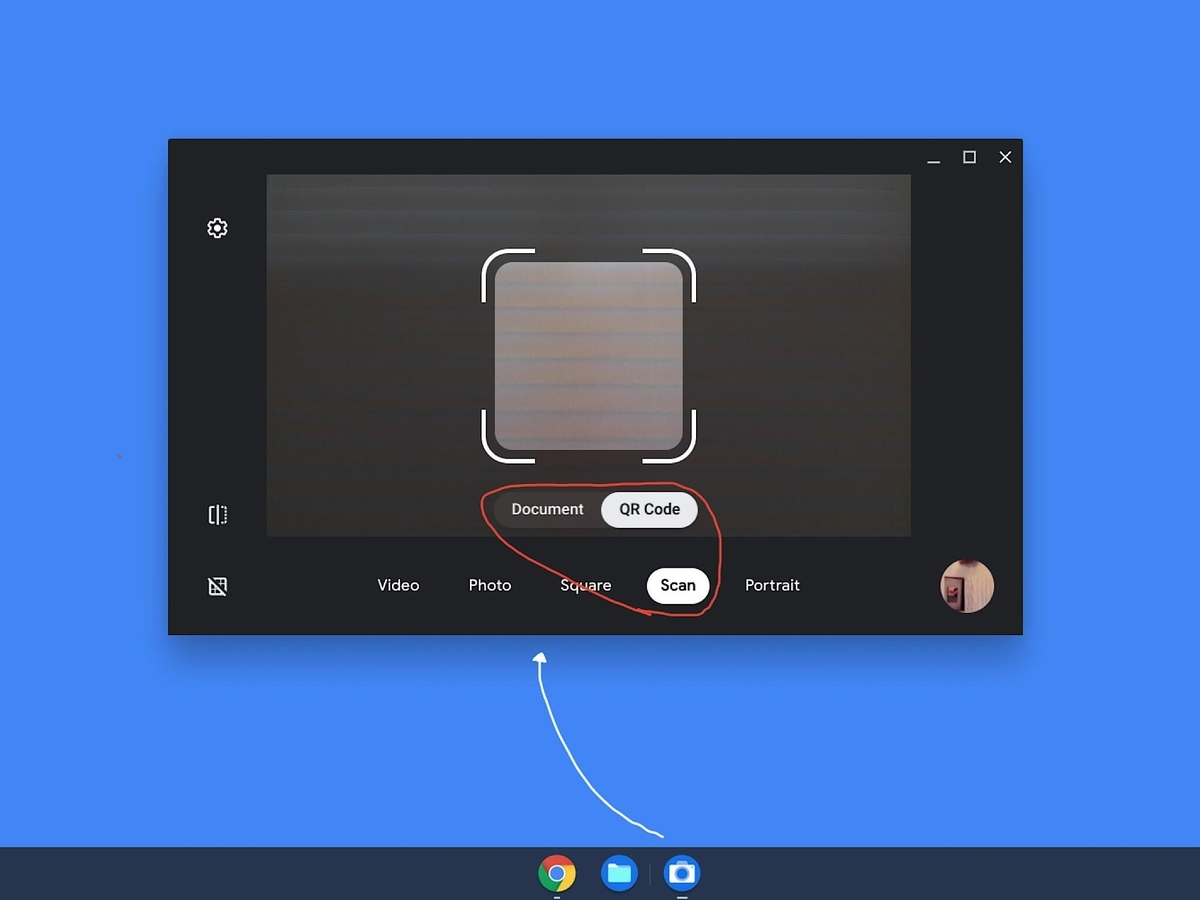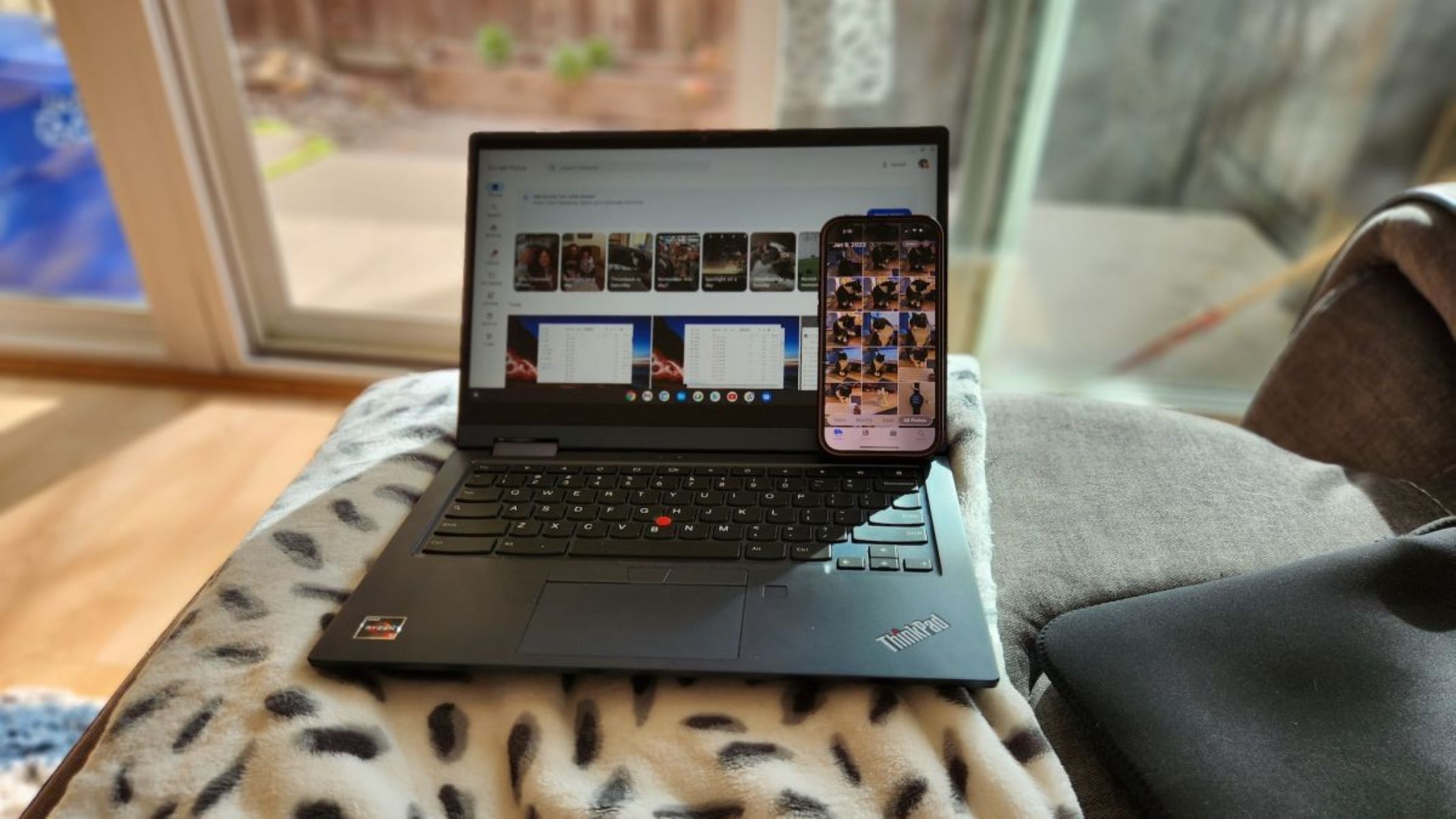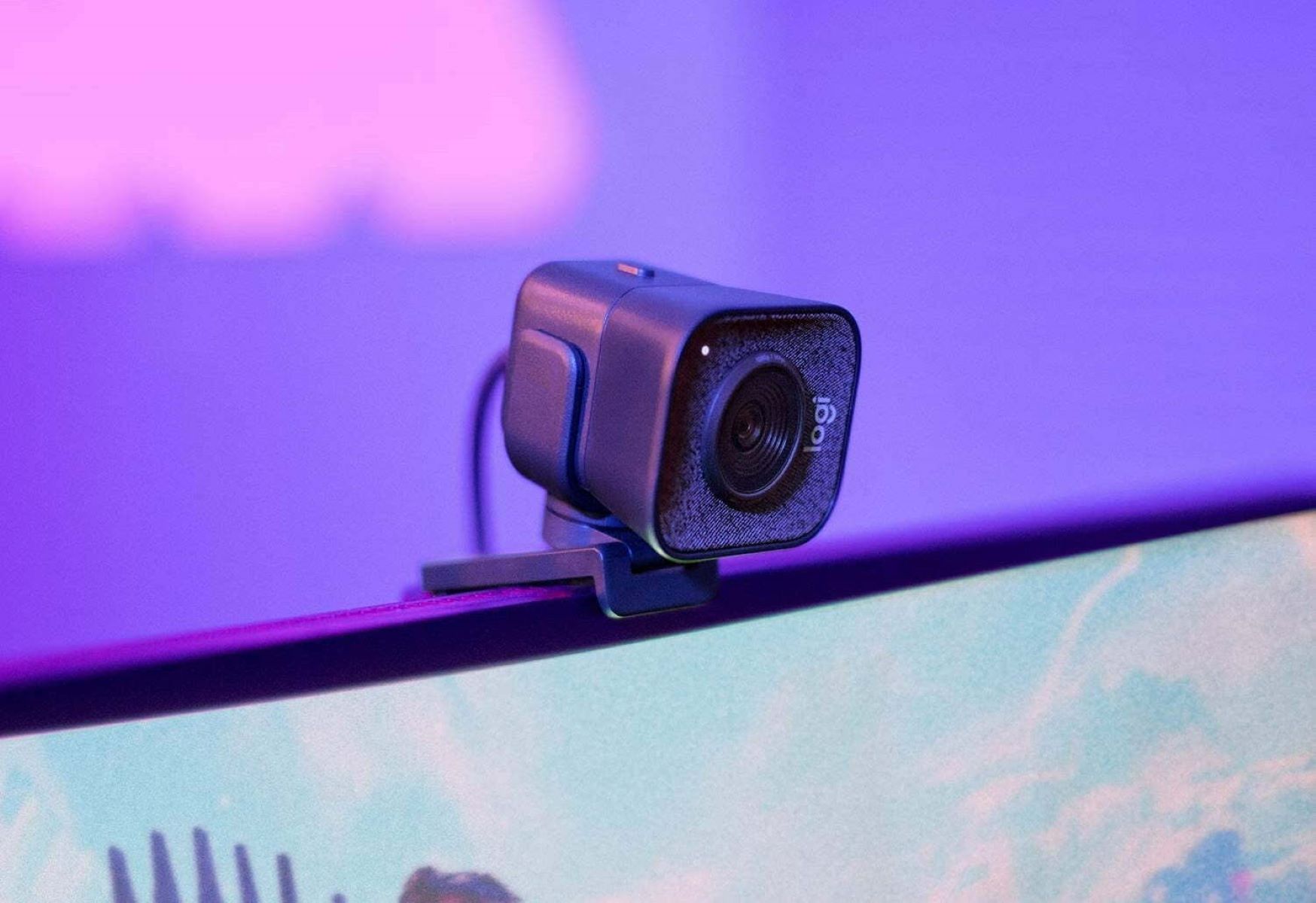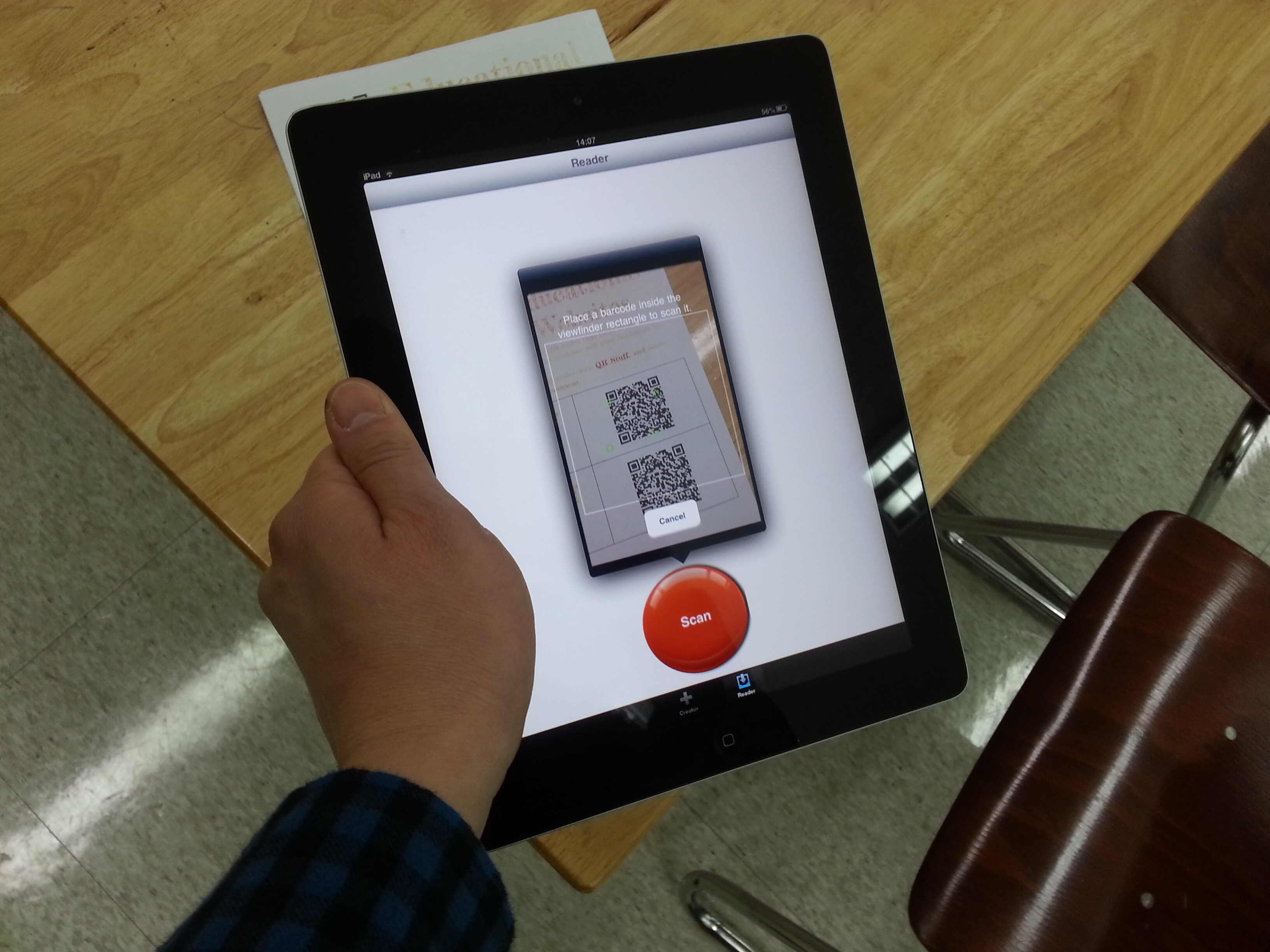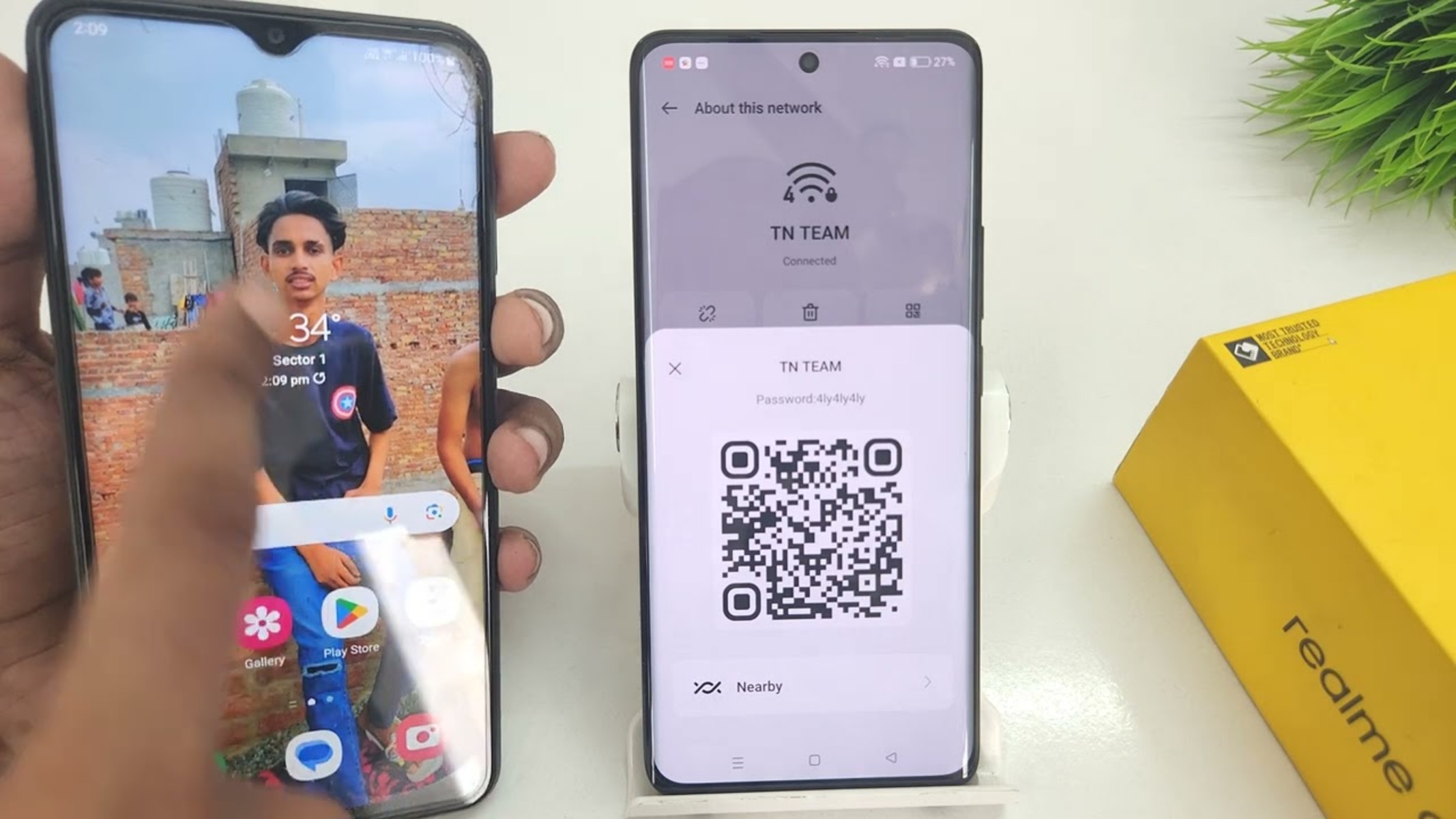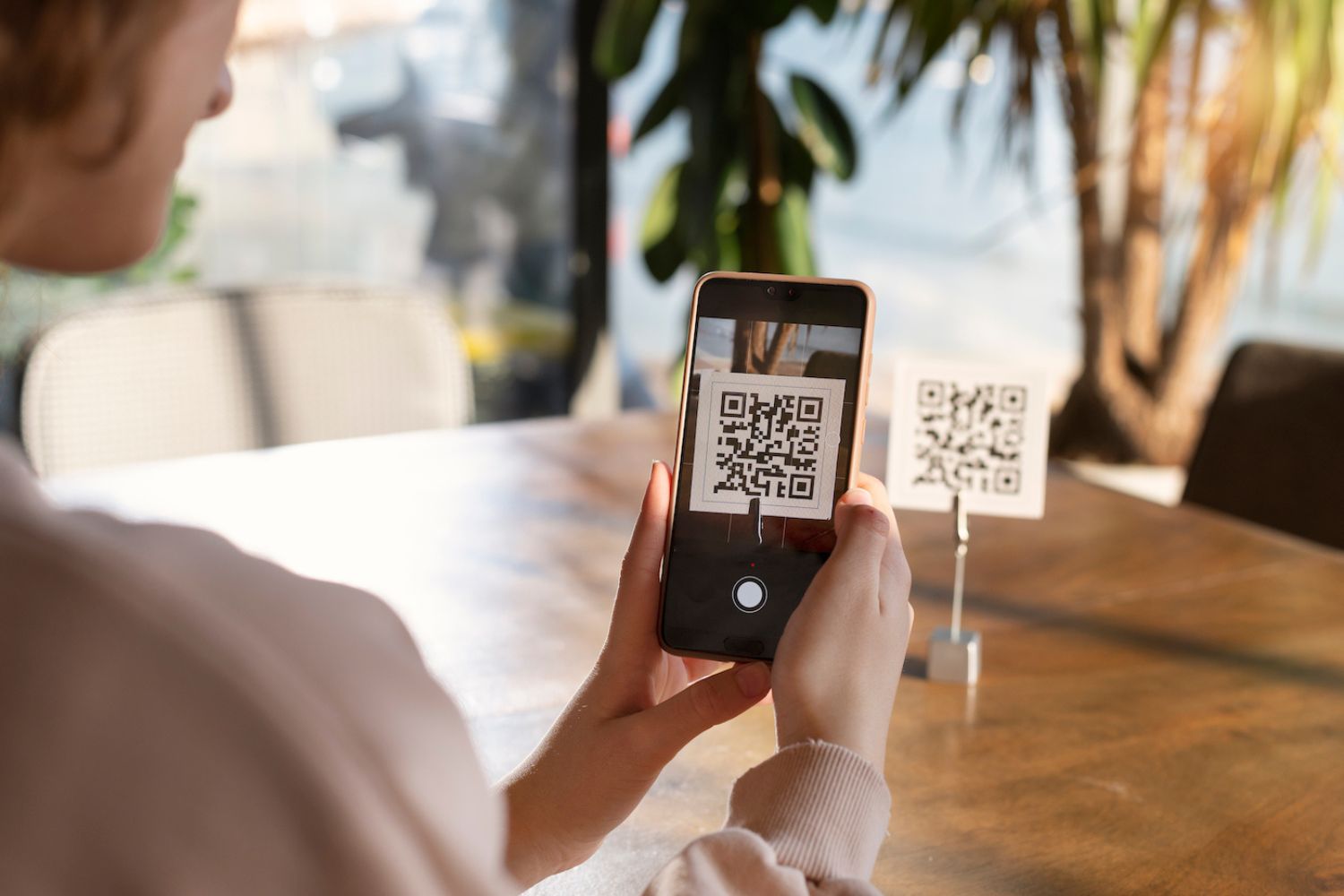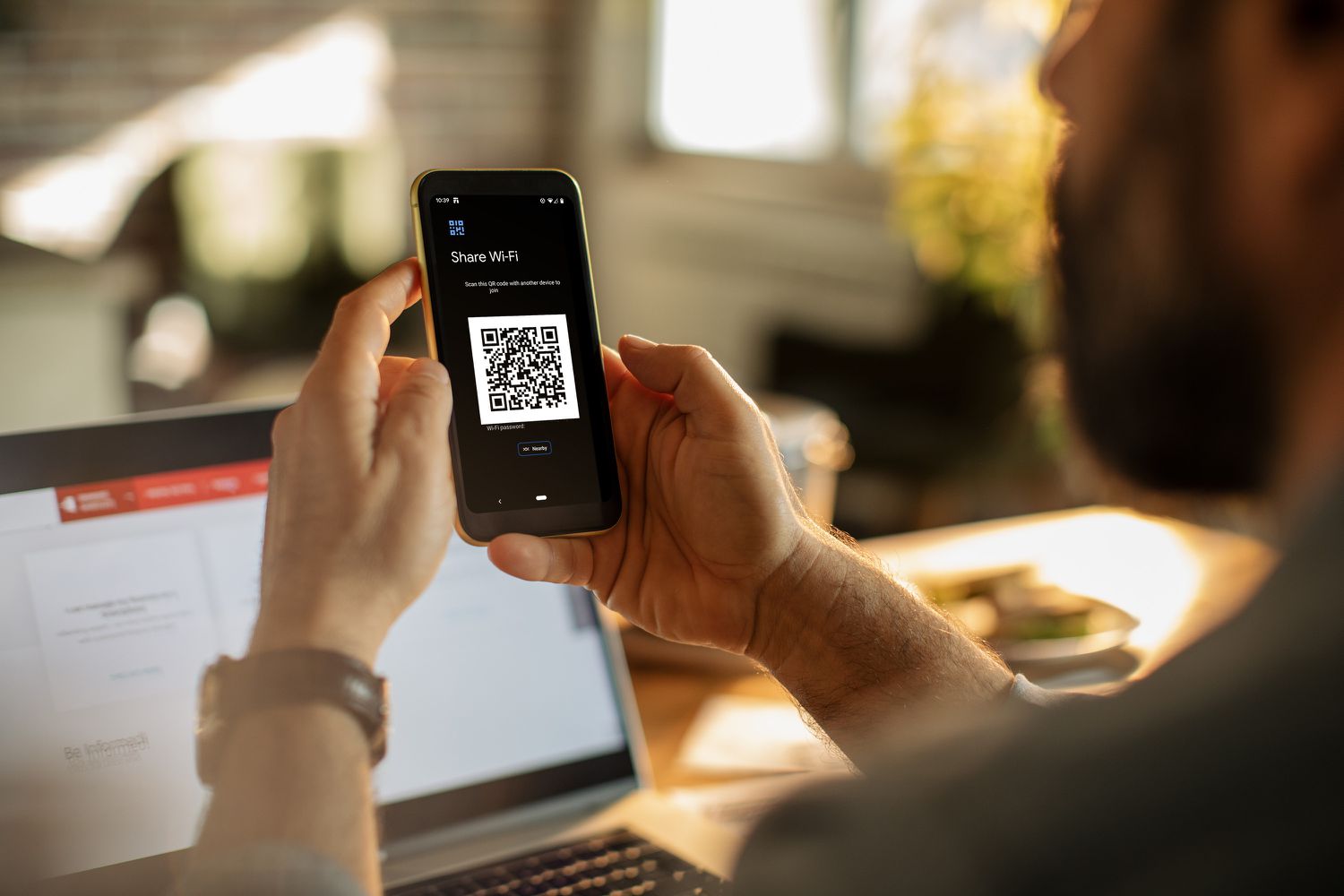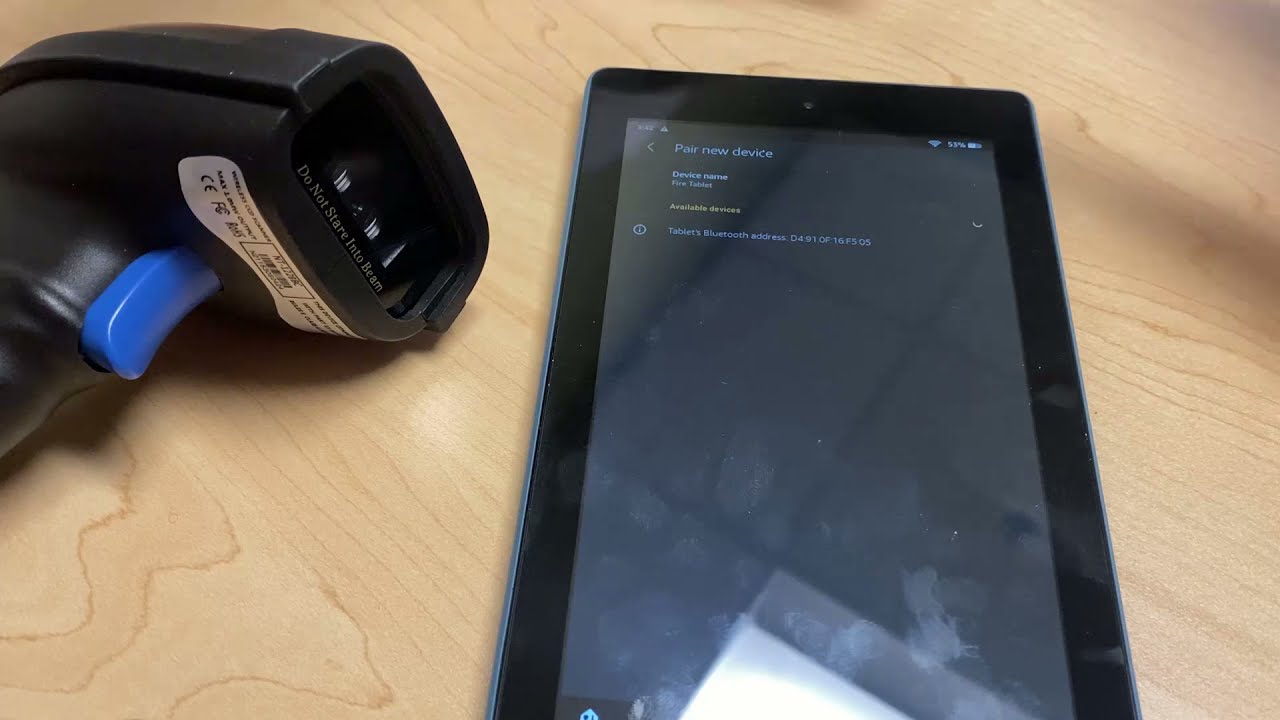Introduction
Welcome to our guide on how to scan a QR Code on your Chromebook. In today’s digital age, QR Codes have become increasingly popular and are often used for various purposes such as website links, product information, event registration, and more. With a Chromebook, you have a versatile device that can easily scan QR Codes and provide you with instant access to the associated content or information.
Before we dive into the methods of scanning QR Codes on your Chromebook, let’s first understand what exactly a QR Code is. A QR Code, short for Quick Response Code, is a two-dimensional barcode that contains information in the form of black squares arranged on a white background. These codes can be scanned by a smartphone or other devices equipped with a camera, allowing users to quickly access the encoded data.
Now, you might be wondering why you would want to scan a QR Code on your Chromebook. Well, QR Codes offer convenience and efficiency by allowing you to quickly access information or perform actions with just a scan. Instead of manually typing in a web address or searching for an app in the Play Store, you can simply scan a QR Code to visit a website instantly or download an app directly.
Scanning QR Codes on a Chromebook can be incredibly useful for a variety of scenarios. For example, if you come across a QR Code on a poster or advertisement, you can scan it to access special offers, discounts, or additional information about a product or service. QR Codes are also commonly used in business cards, allowing you to quickly save contact information to your Chromebook with a single scan.
In the following sections, we will walk you through two methods to scan QR Codes on your Chromebook. The first method involves using a QR Code scanner app, while the second method utilizes Chromebook’s built-in camera app. So, let’s get started and learn how to effortlessly scan QR Codes on your Chromebook!
What is a QR Code?
A QR Code, short for Quick Response Code, is a type of two-dimensional barcode that stores information in the form of black squares arranged on a white background. It was originally developed in Japan by Denso Wave, a subsidiary of Toyota, in 1994. QR Codes gained widespread popularity due to their ability to store large amounts of data and their ease of use.
Unlike traditional barcodes that can only store limited information, QR Codes can store various types of data, including text, URLs, contact information, and more. This versatility makes them suitable for a wide range of applications, from advertising and marketing to inventory management and ticketing systems.
QR Codes are designed to be easily scanned by devices equipped with a camera, such as smartphones, tablets, and even Chromebooks. When a QR Code is scanned, the encoded information is decoded and can trigger various actions, such as opening a website, displaying product details, initiating a phone call, or sending an email.
QR Codes can be seen in numerous places, including retail stores, restaurants, airports, museums, and promotional materials. They provide a convenient and efficient way for businesses and individuals to share information and engage with their audience, enabling quick access to content without the need for manual input or searching.
To scan a QR Code, you simply need a device with a camera and a QR Code scanning app or software. Once the QR Code is scanned, the app or software decodes the information and performs the associated action. With the advancement of technology, many smartphones now come with built-in QR Code scanning capabilities, eliminating the need to download an additional app.
QR Codes offer numerous benefits, such as simplifying information sharing, enhancing user experience, and providing an interactive and engaging way to connect with customers. They have become an essential tool for businesses, marketers, and individuals who want to streamline processes, improve communication, and make information readily accessible.
In the following sections, we will explore how you can effortlessly scan QR Codes on your Chromebook using different methods. So, let’s continue our journey and learn how to harness the power of QR Codes on your Chromebook!
Why would you want to scan a QR Code on your Chromebook?
QR Codes have become a ubiquitous part of our daily lives, and scanning them on your Chromebook can offer a multitude of benefits. Let’s take a closer look at why you would want to scan a QR Code on your Chromebook:
- Instant access to information: Scanning a QR Code with your Chromebook allows you to quickly access information without the need for manual typing or searching. Whether it’s a website, a product description, or contact details, a QR Code can provide an instant gateway to the desired information.
- Simplify tasks: Scanning QR Codes on your Chromebook can simplify various tasks. For example, instead of manually typing a long and complex URL, a QR Code can instantly take you to the targeted website. Similarly, scanning a QR Code on a business card can automatically save contact information to your Chromebook’s address book.
- Effortless app installation: QR Codes can be used to simplify the process of downloading and installing apps on your Chromebook. With a simple scan, you can bypass the traditional search and download process, instantly accessing the desired app without navigating through app stores.
- Unlock special offers: Many businesses and advertisers incorporate QR Codes into their promotional material to provide exclusive offers and discounts. By scanning these QR Codes with your Chromebook, you can unlock special deals, coupons, or access to limited-time promotions.
- Engage in interactive experiences: QR Codes can enable interactive experiences on your Chromebook. For instance, scanning a QR Code at a museum exhibit can provide detailed information about an artifact or a link to a multimedia presentation, enhancing your learning experience.
- Contactless interactions: In today’s context, where contactless interactions are encouraged, QR Codes offer a touch-free way to access information and perform actions. Scanning QR Codes on your Chromebook allows you to minimize physical contact while still engaging with businesses and services.
- Streamline workflows: QR Codes can be used to streamline workflows and improve productivity. For example, in inventory management, scanning QR Codes attached to products or assets can provide real-time information about their status, simplifying tracking and stock management processes.
These are just a few examples of why you would want to scan a QR Code on your Chromebook. The versatility and convenience of QR Codes make them an invaluable tool for accessing information, simplifying tasks, and engaging in interactive experiences.
In the next sections, we will explore two methods to scan QR Codes on your Chromebook, so you can start enjoying the benefits and possibilities they offer. Let’s dive in!
How to scan a QR Code on Chromebook
Now that you understand the importance and benefits of scanning QR Codes on your Chromebook, let’s explore two methods you can use to scan QR Codes:
Method 1: Using a QR Code scanner app
One of the easiest ways to scan QR Codes on your Chromebook is by using a third-party QR Code scanner app. These apps are readily available in the Chrome Web Store and offer user-friendly interfaces for seamless scanning.
Here’s how you can scan a QR Code using a scanner app:
- Open the Chrome Web Store on your Chromebook and search for a QR Code scanner app.
- Select a reputable QR Code scanner app from the search results and install it on your Chromebook.
- Launch the QR Code scanner app from your Chromebook’s app launcher.
- Allow the app to access your Chromebook’s camera so that it can scan QR Codes.
- Point the camera of your Chromebook towards the QR Code you want to scan, ensuring that the QR Code is within the frame.
- The app will automatically detect the QR Code and decode the information it contains.
- Once the information is decoded, the app may perform the associated action, such as opening a website or displaying contact information.
Method 2: Using Chromebook’s built-in camera app
If you prefer not to install a separate QR Code scanner app, you can use Chromebook’s built-in camera app to scan QR Codes. Although this method may vary slightly depending on your Chromebook model and operating system version, the general steps remain the same.
Here’s how you can scan a QR Code using Chromebook’s built-in camera app:
- Open the camera app on your Chromebook. You can usually find it in the app launcher or system tray.
- Select the option to switch to the rear-facing camera if you’re not already using it.
- Hold your Chromebook steady and position the QR Code within the camera frame.
- The camera app will automatically detect the QR Code and display a notification or overlay with the decoded information.
- Tap on the notification or overlay to perform the associated action, such as opening a website or saving contact information.
Please note that the availability and functionality of the built-in camera app may vary depending on your Chromebook model and operating system version. If you encounter any issues or limitations when using the built-in camera app, you may consider using a third-party QR Code scanner app as mentioned in Method 1.
Troubleshooting common issues:
- If the QR Code scanner app or camera app is not detecting the QR Code, ensure that the QR Code is clear and properly displayed.
- Make sure there is adequate lighting when scanning the QR Code to ensure optimal performance.
- If the QR Code is not decoding correctly, double-check that you are using a reliable QR Code scanning app or ensure that the camera lens is clean and free from any obstructions.
Now that you know how to scan QR Codes on your Chromebook using both a scanner app and the built-in camera app, you can start unlocking the convenience and accessibility they offer. Enjoy seamless access to information and simplify various tasks with just a quick scan!
Method 1: Using a QR Code scanner app
One of the easiest ways to scan QR Codes on your Chromebook is by using a third-party QR Code scanner app. These apps are readily available in the Chrome Web Store and offer user-friendly interfaces for seamless scanning.
Here’s how you can scan a QR Code using a scanner app:
- Open the Chrome Web Store on your Chromebook and search for a QR Code scanner app.
- Select a reputable QR Code scanner app from the search results and install it on your Chromebook.
- Launch the QR Code scanner app from your Chromebook’s app launcher.
- Allow the app to access your Chromebook’s camera so that it can scan QR Codes.
- Point the camera of your Chromebook towards the QR Code you want to scan, ensuring that the QR Code is within the frame.
- The app will automatically detect the QR Code and decode the information it contains.
- Once the information is decoded, the app may perform the associated action, such as opening a website or displaying contact information.
Using a QR Code scanner app on your Chromebook offers a convenient and efficient way to scan QR Codes. The dedicated app provides focused functionality and often offers additional features such as history tracking, customizable settings, and the ability to interact with different types of QR Codes.
When choosing a QR Code scanner app from the Chrome Web Store, make sure to select one that has positive user reviews and high ratings. This ensures that you are getting a reliable and trustworthy app that will fulfill your scanning needs.
Once you have installed and launched the QR Code scanner app on your Chromebook, scanning QR Codes becomes a breeze. Simply point your Chromebook’s camera at the QR Code, and the app will quickly detect and decode the information encoded in the QR Code.
After the QR Code is successfully scanned and decoded, the app may automatically perform the associated action. For example, if the QR Code contains a website URL, the app may open that website in a new browser tab. If the QR Code contains contact information, the app may prompt you to save the contact to your Chromebook’s address book.
Using a QR Code scanner app on your Chromebook is a great way to streamline information access and simplify tasks. It eliminates the need for manual typing or searching, allowing you to quickly and effortlessly interact with QR Codes.
Please note that the specific steps and functionality may vary slightly depending on the QR Code scanner app you choose to install. It is recommended to explore the app’s settings and documentation for any additional features and customization options available.
Now that you know how to use a QR Code scanner app on your Chromebook, you can easily scan QR Codes and unlock the convenience they offer. Enjoy quick access to information and effortless interactions with just a simple scan!
Method 2: Using Chromebook’s built-in camera app
If you prefer not to install a separate QR Code scanner app, you can use Chromebook’s built-in camera app to scan QR Codes. Although this method may vary slightly depending on your Chromebook model and operating system version, the general steps remain the same.
Here’s how you can scan a QR Code using Chromebook’s built-in camera app:
- Open the camera app on your Chromebook. You can usually find it in the app launcher or system tray.
- Select the option to switch to the rear-facing camera if you’re not already using it.
- Hold your Chromebook steady and position the QR Code within the camera frame.
- The camera app will automatically detect the QR Code and display a notification or overlay with the decoded information.
- Tap on the notification or overlay to perform the associated action, such as opening a website or saving contact information.
Using Chromebook’s built-in camera app to scan QR Codes provides a convenient and integrated solution without the need for third-party apps. The camera app is optimized for your specific Chromebook model and ensures a seamless scanning experience.
It is important to note that the availability and functionality of the built-in camera app may vary depending on your Chromebook model and operating system version. Some older models may not have a built-in camera app, or the app may have limited capabilities compared to newer models.
When using the camera app to scan QR Codes, make sure to switch to the rear-facing camera for optimal scanning performance. This camera is usually located on the back of your Chromebook’s display and is designed to capture images and scan barcodes and QR Codes.
To scan a QR Code, hold your Chromebook steady and position the QR Code within the camera frame. The camera app will automatically detect the QR Code and produce a notification or overlay displaying the decoded information.
Depending on the content of the QR Code, you can tap on the notification or overlay to perform the associated action. For example, if the QR Code contains a website URL, tapping on the notification will open that website in a new browser tab. If the QR Code contains contact information, you may be prompted to save the contact to your Chromebook’s address book.
Please note that the steps and capabilities of the built-in camera app may vary. Some Chromebooks may offer additional features such as scanning documents or capturing images from the camera app.
Overall, using Chromebook’s built-in camera app to scan QR Codes provides a straightforward and integrated solution for accessing information and performing tasks. It eliminates the need for installing additional apps and offers a convenient way to interact with QR Codes on your Chromebook.
If you encounter any limitations or issues when using the built-in camera app, you may consider using a third-party QR Code scanner app as an alternative. These apps often provide additional functionality and customization options to enhance your scanning experience.
Now that you know how to use your Chromebook’s built-in camera app to scan QR Codes, you can effortlessly access information and perform actions with just a quick scan. Enjoy the convenience and simplicity of scanning QR Codes on your Chromebook!
Troubleshooting common issues
While scanning QR Codes on your Chromebook is generally a smooth and hassle-free process, you may encounter some common issues that can be easily resolved. Here are some troubleshooting tips to help you overcome these issues:
- Issue: QR Code not detected
If you are having trouble getting the QR Code scanner app or the built-in camera app to detect the QR Code, ensure that the QR Code is clear and properly displayed. Check that the QR Code is not damaged or obstructed, and that there is adequate lighting when scanning the code. Sometimes, it may be helpful to move closer to the QR Code or adjust the angle at which you are scanning. - Issue: QR Code not decoding correctly
If the QR Code is not decoding correctly, double-check that you are using a reliable QR Code scanning app or ensure that the camera lens is clean and free from any obstructions. Sometimes, QR Codes with excessive damage or poor print quality may be difficult to decode, so it’s important to try scanning from different angles or distances. If possible, try scanning the QR Code with a different QR Code scanner app or on a different device to see if the issue persists. - Issue: App not performing the expected action
After scanning a QR Code, if the associated app does not perform the expected action, check the settings of the app or camera app to ensure that the appropriate permissions are granted. Some actions, such as opening a website or saving contact information, may require specific permissions to be activated. Additionally, make sure that you have a stable internet connection to ensure that websites or online actions can be successfully executed. - Issue: Lack of QR Code scanner app
If you are unable to find a suitable QR Code scanner app in the Chrome Web Store, it may be helpful to search for alternative or similar apps. Additionally, consider checking for QR Code scanning capabilities within other apps that you may already have installed on your Chromebook, such as document scanning or barcode scanning apps. However, keep in mind that dedicated QR Code scanner apps often provide the best user experience and offer additional features tailored specifically for scanning QR Codes.
By following these troubleshooting tips, you should be able to overcome common issues when scanning QR Codes on your Chromebook. However, it’s important to remember that individual experiences may vary depending on the specific Chromebook model, operating system version, and QR Code scanning app used.
If you continue to experience difficulties with QR Code scanning on your Chromebook, you may want to seek additional support. Consult the user manual or documentation provided by your Chromebook manufacturer for specific instructions or contact their customer support for further assistance. Additionally, reaching out to the developer of the QR Code scanner app you are using can also be helpful in resolving any issues.
Now armed with troubleshooting knowledge, you can confidently tackle any issues that may arise and enjoy a seamless QR Code scanning experience on your Chromebook. Get ready to unlock the full potential of QR Codes and effortlessly access information with just a quick scan!
Conclusion
Scanning QR Codes on your Chromebook opens up a world of convenience and accessibility. Whether it’s accessing information, simplifying tasks, or engaging in interactive experiences, QR Codes provide a seamless way to connect with content and services.
In this guide, we explored two methods for scanning QR Codes on your Chromebook. The first method involved using a QR Code scanner app from the Chrome Web Store. These apps offer dedicated functionality and customization options, making them a great choice if you prefer a standalone solution.
The second method utilized Chromebook’s built-in camera app. While the specific steps may vary depending on your Chromebook model and operating system version, the built-in camera app provides an integrated and convenient way to scan QR Codes without the need for additional apps.
Throughout the guide, we also provided troubleshooting tips for common issues you may encounter when scanning QR Codes. By following these tips, you can overcome any obstacles and ensure a smooth scanning experience.
As you use your Chromebook to scan QR Codes, remember the versatility and possibilities that QR Codes offer. From instant access to information and contactless interactions to streamlined workflows and engaging experiences, QR Codes have transformed the way we interact with digital and physical content.
Whether you’re a business professional, a student, or a tech-savvy individual, scanning QR Codes on your Chromebook can enhance your productivity, streamline tasks, and simplify information access.
So, equip yourself with a reliable QR Code scanner app or use Chromebook’s built-in camera app, and start exploring the endless opportunities that QR Codes present. Tap into the convenience, efficiency, and interactivity that QR Codes bring to your Chromebook experience.
Now, go ahead and unlock the potential of QR Codes on your Chromebook. Scan away and enjoy effortless access to the world of information and possibilities!







